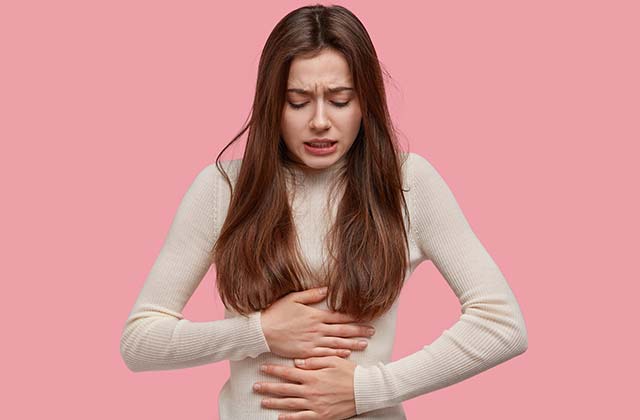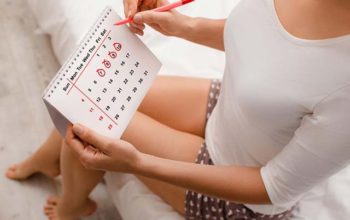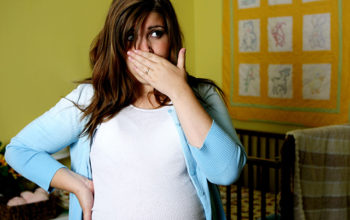More than half of women who menstruate experience some pain for 1 to 2 days each month. The pain associated with the monthly period is called dysmenorrhea.
Dysmenorrhea is caused by uterine contractions. The pain is usually mild. However, for some women, the pain is so severe that it keeps them from doing their normal activities for several days a month. Usually, intense pain also has other symptoms like nausea, diarrhea, headache, dizziness, and vomiting.
A woman may experience two kinds of dysmenorrhea: primary and secondary.
Primary dysmenorrhea happens when the pain begins before or during the menstrual period. This feeling is caused by prostaglandins, the natural chemicals that are present in the uterus lining. These chemicals are the reason for the contraction of the blood vessels and muscles in the uterus. Prostaglandin level is high during the first day of a woman’s period. As the uterus lining continues to shed during your bleeding times, the prostaglandin level decreases. This is the reason why you feel less pain a few days after your period comes.
Secondary dysmenorrhea, on the other hand, is considered a symptom of reproductive organ disorder. Contrary to primary dysmenorrhea, the pain worsens after the first day of the period and it can last after you stop bleeding. When you have this, the pain comes a few days before a period begins. The pain intensifies during your period and can stay even after your bleeding ends.
Here is a list of treatments that can be used to ease period pain:
- Hydrate by drinking more water
Bloating makes dysmenorrhea symptoms worse and drinking more water helps ease it. Drink 6 to 8 glasses of water every day, especially during your period.
In conjunction with menstrual cramps, some women experience vomiting or diarrhea. Drink plenty of water to replace lost fluids.
Besides water, there are other beverages you can drink to improve your fluid intake. After getting up in the morning, start the day by drinking a glass of fruit-infused water. Have a ginger or chamomile tea. You can also add some mint, a lemon wedge or cucumber into the water. Keep well-hydrated so that you will avoid having cramps in the future.
- Exercise
The more you exercise, the better you feel. Physical activities like swimming, jogging, walking or biking can trigger the release of chemicals that block pain receptors. Even if you are on your period, you can still engage in these activities.
If you experience fatigue, a gentler form of exercise such as yoga is easier. You can also perform light exercises that engage the core. Search online for videos that help you tone your abdominal area. There are a lot of materials available on the internet that will help you stay active even while having your menses.
- Apply heat
Apply a heating pad, heat wrap, or hot water bottle over your abdomen to relieve pain. You can also partner heat compress with drinking ibuprofen for immediate pain relief. A hot shower or warm towel can be used, too. The heat helps muscles relax.
- Sleep
You need to sleep well whenever you have your menses. Getting enough rest can let you fight the discomfort that comes along with having a period. Try sleeping in different positions during your period so that you can feel more comfortable. As much as possible, prioritize your sleep time during this week. Avoid TV, your smartphone, computer, and other screens before bed to help you wind down.
- Massage
Massage encourages blood flow. Menstrual cramps can be relieved by massaging your abdomen for as little as 5 minutes a day. Massaging cream has beneficial oils like lavender and clary sage that help improve circulation and also make you relax. These oils are also known to have properties that relieve the discomfort that comes from having dysmenorrhea.
- Medication relief
Painful periods can be treated through medication. Certain pain relievers target prostaglandins. These medicines, which are also called nonsteroidal anti-inflammatory drugs or NSAIDs, decrease the production of prostaglandins thereby lessening the pain you feel. This in turn makes menstrual cramps less severe. Ibruprofen and naproxen are examples of NSAIDs that can be bought over the counter at your local pharmacy.
- Acupuncture and acupressure
Nerve stimulation therapies are useful for treating painful periods. Acupuncture and acupressure are eastern healing treatments. They stimulate certain trigger points on the skin to produce desired effects in the body.
An acupuncturist uses needles to trigger points and stimulate them. You can also put pressure on trigger points using your hands to achieve similar results. If you apply pressure to key points on the feet, abdomen, back, and the fleshy part between your thumb and index finger, you may be able to relieve the pain you feel.
If home remedies and other interventions are not enough to control your symptoms, it is time to visit a virtual walk-in clinic Hamilton. Let the doctor know about the symptoms and provide a complete picture of your medical history. The doctor will help come up with the best treatment for you.



